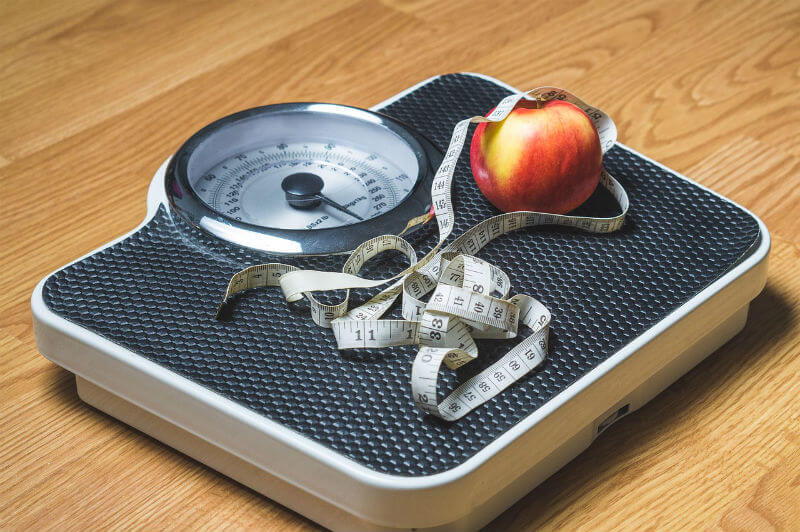
PRAL Alkalinity Calculation for Acid-Alkaline Foods
There is a simple calculation for acid and alkaline foods that can measure Potential Renal Acid Load. However, like many things that are simple, there is more to the Potential Renal Acid Load calculation than meets the eye.
Anyway, before we look at the details of the PRAL alkalinity calculation. Let’s start with some background.
PRAL Alkalinity Calculation Background
People calculate PRAL alkalinity scores to estimate their pH balance. But pH balance means different things to different people. At Foodary, I assume it to mean:
pH balance is the overall balance between acid and alkali (base) in the human body, as measured by the alkalinity of urine.
The important points are:
- pH (powers of hydrogen) is a specific scale showing acid or alkaline properties.
- pH Balance is a balance between acid and alkali – both are important
- pH Balance is measurable
- pH Balance relates to urine from the kidneys, as distinct from blood acid base balance
- pH Balance relates to the effect of diet on the body after digestion of food and drink
These points are important because most people get confused about pH balance and it’s relationship to an alkaline diet. Let me get the confusing principles out of the way, then I can return to explaining the Potential Renal Acid Load calculation. I can do this best by explaining what pH balance is not.
- pH Balance is not related to blood
- Blood is regulated by a healthy body to a very tight range. When the systems that regulate blood pH fail, you have serious medical problems. These problems show as acidosis or alkalosis. These medical conditions have nothing to do with nutrition, and they are beyond the scope of Foodary.
- pH Balance is not related to measuring acidity prior to consumption
- There are some food charts published to show the pH values of food, measured from the actual food or drink item. This is only relevant to canning factories and other parts of the food packaging and distribution industry.
- pH Balance is not related to ash residues from laboratory tests
- This is the biggest area of confusion related to alkaline foods. Part of the process of compiling nutrition charts is to incinerate food or drink until all water and organic material is removed. The resulting ash is measured for pH. This is nothing to do with the nutrition value of food, and it has nothing to do with the alkalizing effect of food. The fact that proteins and fats are destroyed in the process should tell you that it is not a reliable indication of nutrition value. It is a dangerous red herring, and should be contemptuously ignored.
One final point of background information remains before I explain the Potential Renal Acid Load Calculation. Though the calculation produces exact values, it should never be judged in absolute terms. There are many variables that affect the calculation, so it is a “best estimate.” Ultimately, it is an estimate of the effect of food as it passes through your digestion system. This effect can be measured more precisely by taking the pH value of urine. The pH Balance Calculation guides your food selection to indicate those foods that have an alkaline or acid effect. You can then measure that effect by testing urine.

How do you measure your food intake?
PRAL Alkalinity Calculation
The pH Balance Calculation that I use is called PRAL (Potential Renal Acid Load). This is a scientific standard for estimating the acid or alkaline effect of food. It has been validated in many research projects. There is an alternative calculation, NEAP, that may interest scientists. However, for all practical purposes, Potential Renal Acid Load is the best, the easiest, and the most reliable way we have of estimating food prior to digestion. Over the next few months, I will give you examples of why Potential Renal Acid Load works, and how it is applied in scientific research to improve health indicators. For today, I want to summarize the PRAL alkalinity calculation so that you can understand how to apply it to your own diet.
When we consume food, our bodies perform a series of complicated biochemical processes to try and balance our nutrition needs. Various organic and inorganic substances are converted into different forms. Some are used immediately, and others are moved into and out of storage. All this activity involves acid and alkaline substances. For the best general health, the overall net activity should be alkaline.
Research by Remer and Manz has proved that only 5 substances need to be measured in food to have a reliable estimate of the outcome when digested. These 5 include acid producing and alkaline producing substances. It is vital that your diet includes both, but the overall balance should be alkaline.
The Potential Renal Acid Load calculation that measures this PRAL diet score is:
| PRAL Score = | Acid | 0.49 Protein (g) + 0.037 Phosphorus (mg) |
| Minus Alkaline | – 0.021 Potassium (mg) – 0.026 Magnesium (mg) – 0.013 Calcium (mg) |
For those who want to understand this more completely, I will publish more explanations of the PRAL Alkalinity Calculation over the coming months. However, you do not need to understand PRAL to make use of Foodary alkaline food lists. But you should be aware that positive PRAL scores are acid-forming foods. Because acid load on the kidneys is positive. So alkaline foods have a negative PRAL score. Because they reduce the acid load on the kidneys (reduced renal acid load).
The PRAL score in Foodary alkaline food lists is positive for acid-forming foods and negative for alkaline-forming foods. For a 2000 calorie diet, your total PRAL score should be at most -35. That score is based on the recommended Daily Values for the nutrients that are used in the Potential Renal Acid Load calculation. There is no real target, but the lower you get the total daily score, the better. Aim for around 25% of your calorie intake as acid forming (positive PRAL Score). But always remember that PRAL scores are an estimate of acid load on your kidneys. So, the only true way of measuring progress on a pH balanced diet is to measure the pH of urine.
PRAL Alkalinity
You can see that protein is always acid forming, so plan your meal with 150 calories of your favorite protein. But if protein is acid forming, how can it be part of an alkaline diet? Because we need protein! So, PRAL alkalinity is all about balancing with alkaline-forming foods. That is foods with negative PRAL scores.
Therefore, add vegetables, whole grains, and fruit to make a 600 calorie meal. If the total is not below -11, switch to more alkaline foods.
If you need any more help to understand Potential Renal Acid Load, please ask in the feedback form below.
Leave PRAL Alkalinity Calculation for Acid-Alkaline Foods to read Foodary Healthy Eating.
PRAL Alkalinity Related Topics
Please remember: to find more related pages that are relevant to you, use the search box near the top of every page.
Common Terms: calcium, Most Helpful Foodary Articles, renal diet
